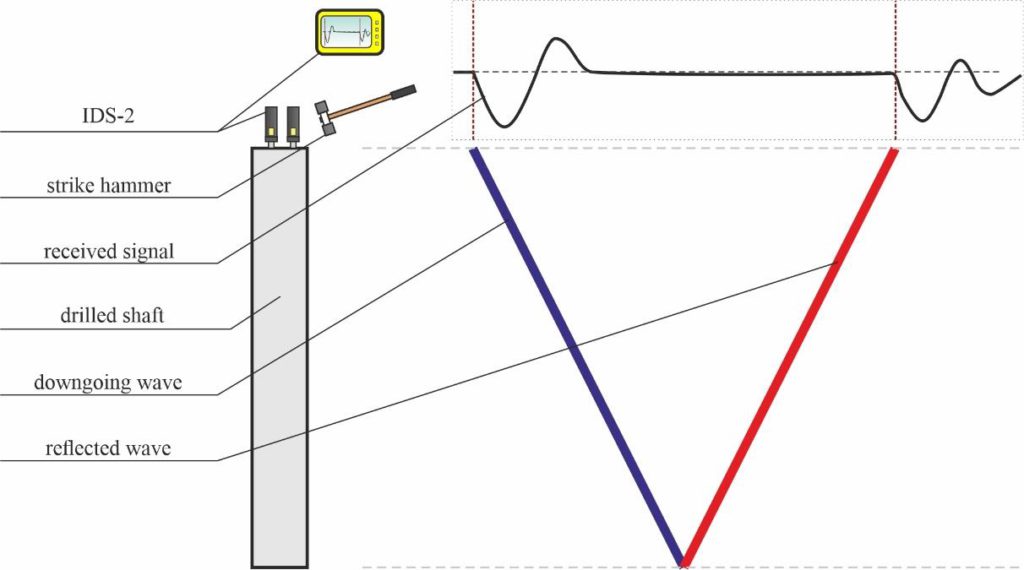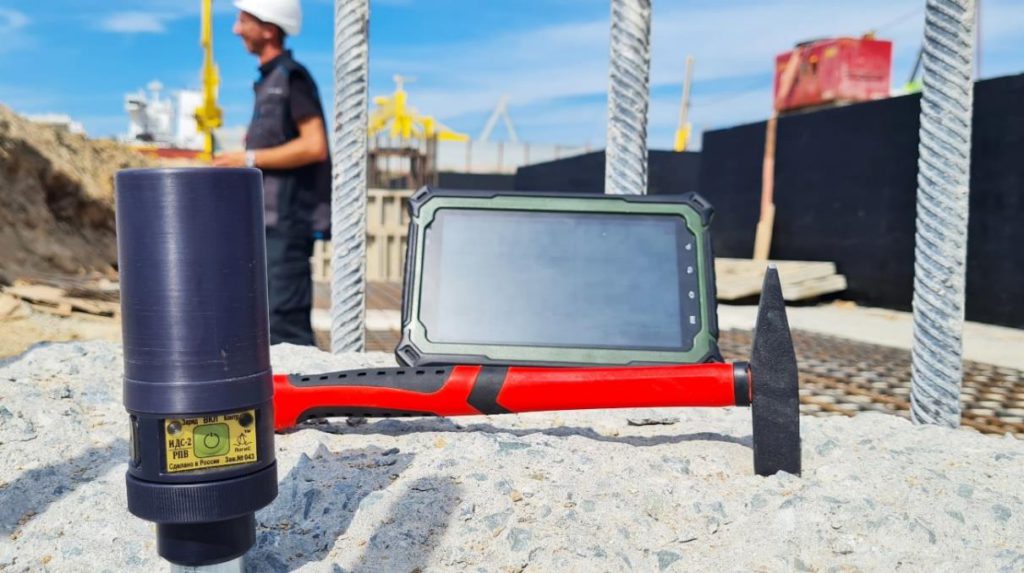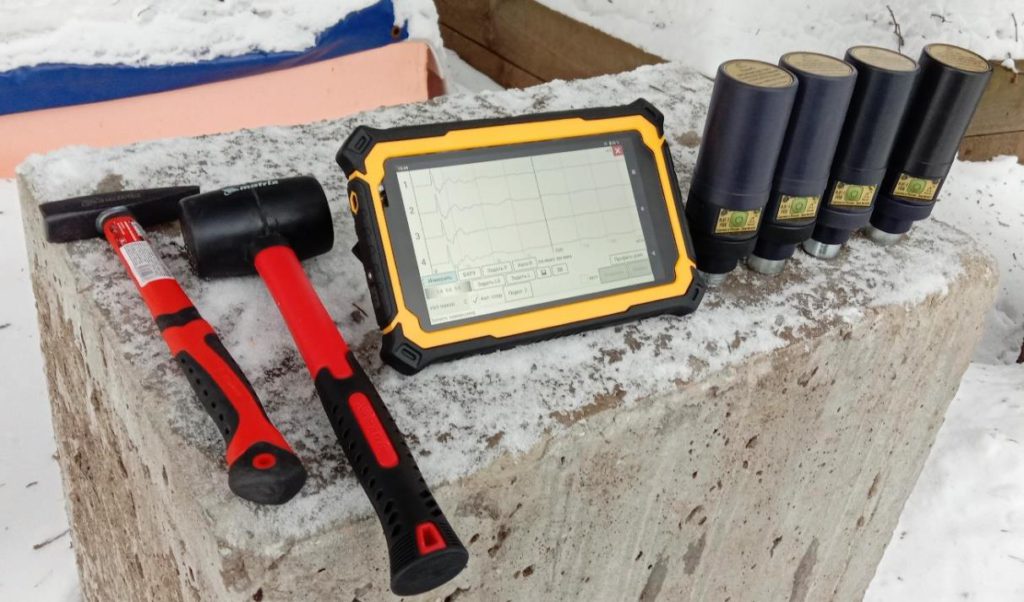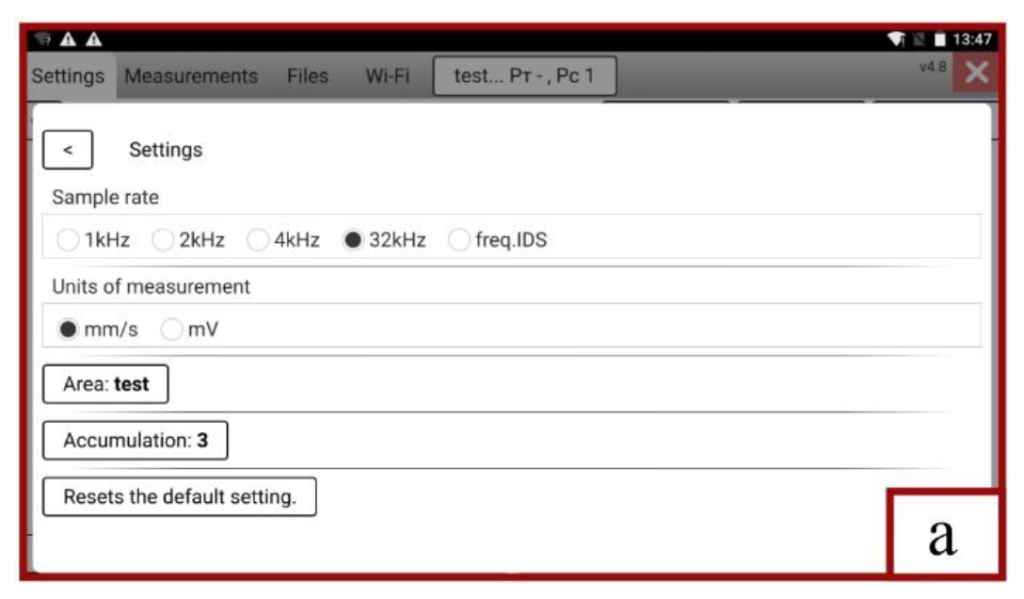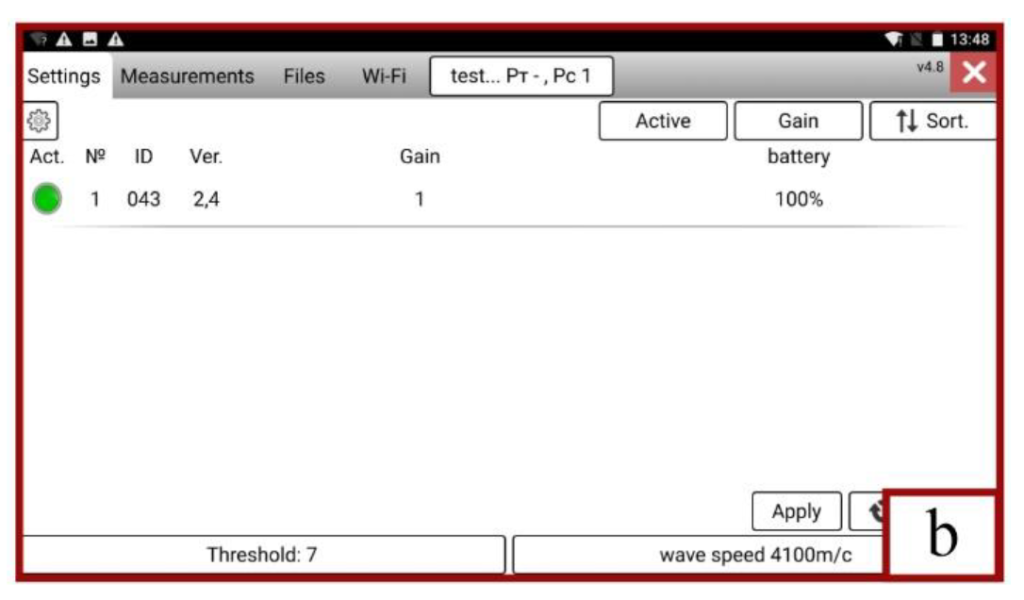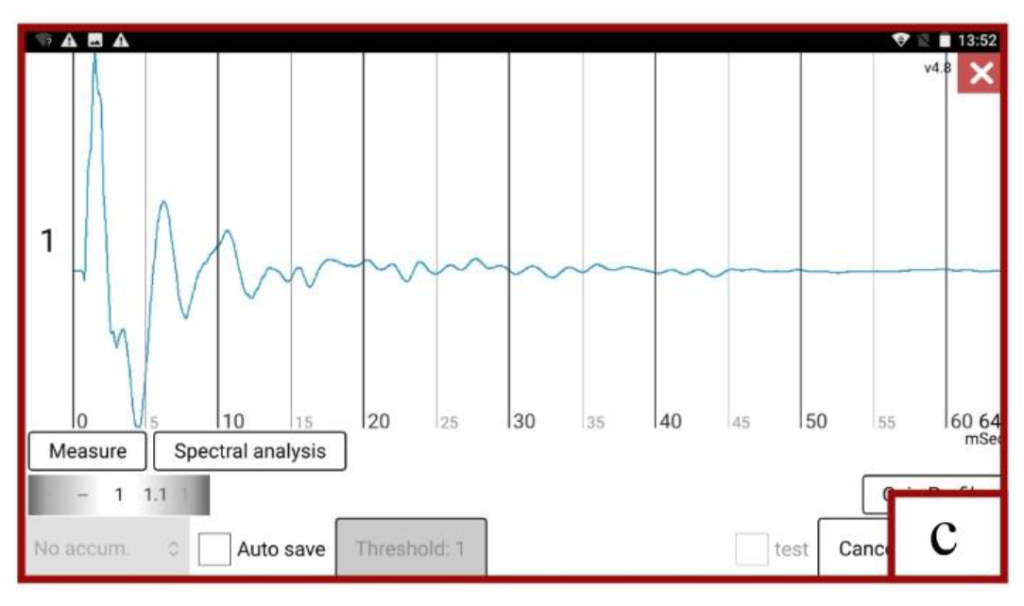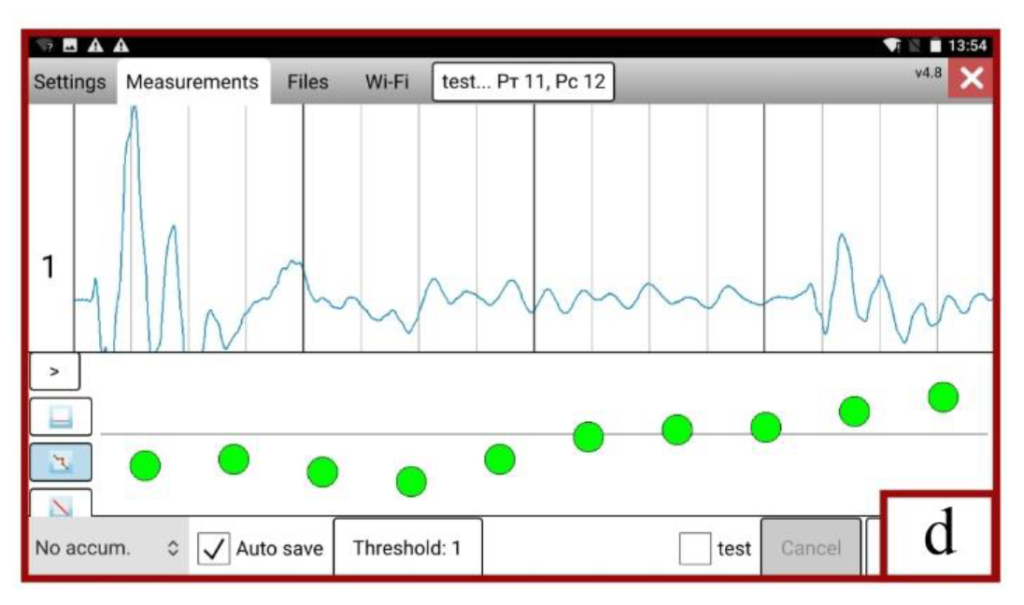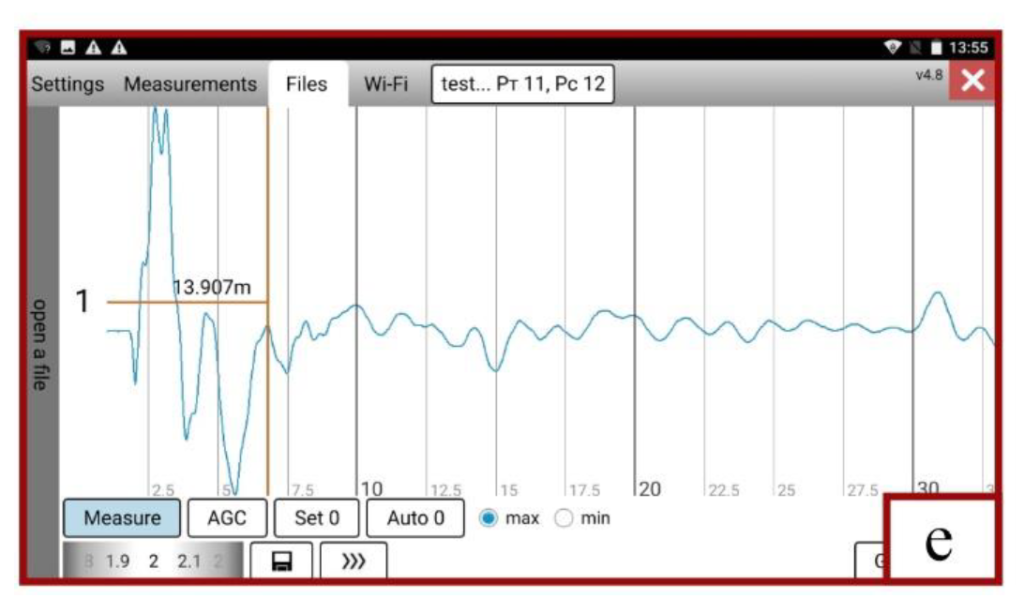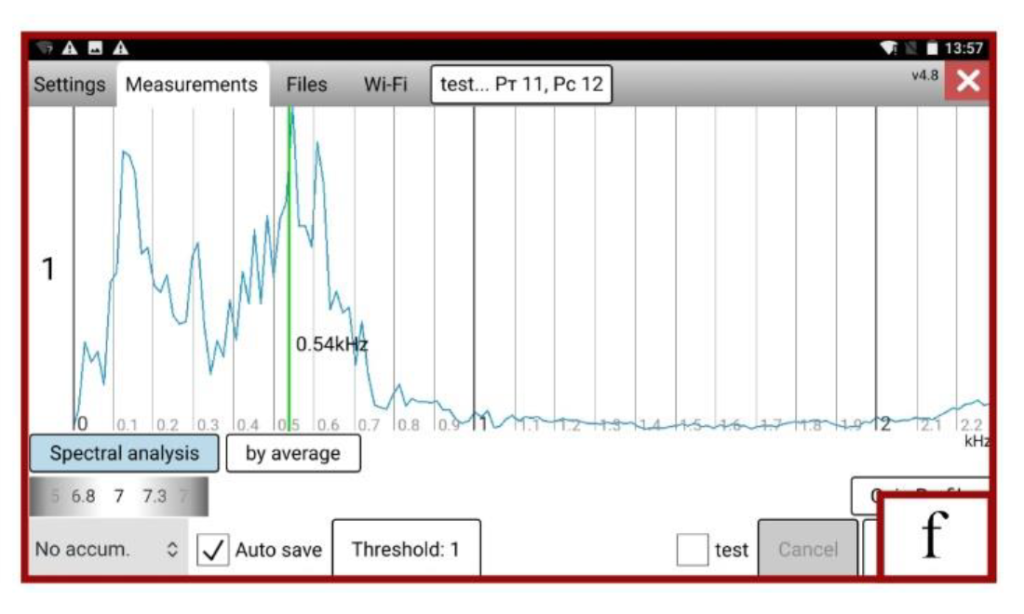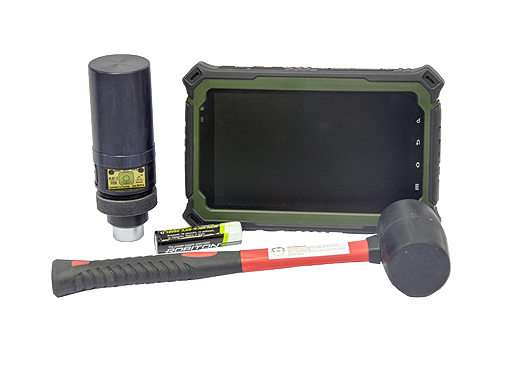
IDS-2 Pile integrity tester
IDS-2 is a modern geophysical device designed for low strain testing of pile foundations. The device features an intuitive interface, ease of use, and performance. Complies with the requirements of modern regulatory documents.
IDS-2 is a modern geophysical device designed for low strain testing of pile foundations. The device features an intuitive interface, ease of use, and performance. Complies with the requirements of modern regulatory documents.
Low strain impact testing (Sonic, SIT) is based on the registration of artificially excited elastic waves in order to obtain information about the length and integrity of the pile. Elastic waves are excited by a hammer hitting the pile head. Signals are registered using a sensor installed on the pile head.
Low strain impact testing principle
The method is intended for non-destructive quality control of reinforced concrete piles (bored and prefabricated driven). The technique is also used to evaluate the length of wooden piles, metal pipe piles, sheet piles; determining the depth of diaphragm and retaining walls, deep foundations.
The method allows the user:
- give an estimation of the pile length with an error of 5-10%;
- detect significant defects (horizontal cracks, changes in the cross-section of the pile, or soil inclusions) that are at least ± 25% of the area of cross-section;
- detect joint zones of separate sections for composite driven piles;
- highlight the layers of the enclosing soil with contrasting acoustic properties.
The main feature of the IDS-2, which distinguishes the device from analogues, is the possibility of using it as a telemetric seismic station. The recorded signals are exported to a personal computer in SEG-Y format, which makes it possible to use professional geophysical software for their processing.
The purchase of several recorders expands the capabilities of the equipment and allows you to inspect ground slabs, retaining walls, massive concrete structures. In addition to assessing the state of structures itself, it is possible to determine their contact conditions with the enclosing soil
| Specification | Value | Dimension |
| Number of signal recorders | 1…4 | pcs |
| Data collection | Tablet PC, IP67 | |
| Data collection interface | WiFi | |
| Maximum distance of registrars from PC | 100 | m |
| Battery | replaceable Li-Ion battery 3,4 А·ч | |
| Time of continuous recorder's operation | 17 | h, at least |
| Recorder THD | 0,01 | %, no more |
| Gain | 0,125; 1; 16; 128 | |
| Instant dynamic range | 110 | dB, at least |
| Operating frequency band | 5…2000 | Hz |
| Sampling frequency | 1…32 | kHz |
| Recorder sensor’s type | velocimeter | |
| 4-channel kit weigth | 5 | kg |
| Recorder weigth | 0,28 | kg |
| Equipment kit dimensions | 38×30×36 | cm |
| Recorder dimensions | ∅50×148 | mm |
Using the multi-channel version of IDS-2, it is possible to perform:
1. Impact-echo testing (IE) according to ASTM C1383 when working on structures whose thickness exceeds 1,0 m;
2. Impulse response testing (IR) when working on the tunnel lining, foundation slabs and other plate-like structures;
3. Near-surface seismic survey (seismic reflection and seismic refraction techniques, (MASW, SASW) in accordance with ASTM D5777 and ASTM D7128.
Interface of the IDS-2 operating software:
a – selection of sampling frequency and number of accumulations;
b - connection of the recorder, setting the wave speed;
c – signal registration window;
d - manual definition of the signal amplification function;
e – work with signals in the time domain;
f - work with signals in the frequency domain



